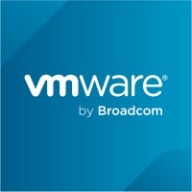

VMware Carbon Black Endpoint and Symantec Endpoint Detection and Response are two prominent endpoint protection solutions. Users prefer VMware Carbon Black's pricing and customer service but favor Symantec's feature set and comprehensive protection.
Features: VMware Carbon Black Endpoint offers real-time threat detection, strong integration capabilities, and effective malware mitigation. Symantec Endpoint Detection and Response provides advanced machine learning, in-depth analytics, and robust protection features.
Room for Improvement: VMware Carbon Black Endpoint could improve reports, dashboard customization, and user interface simplicity. Symantec Endpoint Detection and Response needs better alert accuracy, reduced configuration complexity, and enhanced user experience.
Ease of Deployment and Customer Service: VMware Carbon Black Endpoint is noted for straightforward deployment and responsive customer service. Symantec Endpoint Detection and Response deployment is more intricate, though customer support is reliable.
Pricing and ROI: VMware Carbon Black Endpoint is cost-effective with good ROI. Symantec Endpoint Detection and Response, despite higher costs, offers strong value due to its extensive features, justifying its premium pricing.
| Product | Market Share (%) |
|---|---|
| VMware Carbon Black Endpoint | 1.8% |
| Symantec Endpoint Detection and Response | 0.6% |
| Other | 97.6% |


| Company Size | Count |
|---|---|
| Small Business | 15 |
| Midsize Enterprise | 7 |
| Large Enterprise | 9 |
| Company Size | Count |
|---|---|
| Small Business | 31 |
| Midsize Enterprise | 9 |
| Large Enterprise | 30 |
Symantec Endpoint Detection and Response (EDR) is a powerful security solution designed to help organizations proactively detect, investigate, and mitigate advanced threats across their endpoint environments. As part of Broadcom's cybersecurity portfolio, Symantec EDR provides comprehensive visibility into endpoint activities, enabling security teams to quickly identify and respond to threats that evade traditional defenses.
Symantec EDR leverages machine learning, behavioral analysis, and global threat intelligence from Symantec's vast network to detect sophisticated threats, including zero-day attacks, ransomware, and advanced persistent threats (APTs). This allows organizations to identify malicious activities early and respond swiftly to mitigate potential damage. The solution offers automated response options that enable security teams to contain and remediate threats quickly.
Symantec EDR provides detailed forensic capabilities, allowing security analysts to dive deep into endpoint data, investigate incidents thoroughly, and understand the scope and impact of attacks. Features such as timeline analysis, incident graphing, and the ability to isolate endpoints enhance investigative efforts and support effective remediation strategies.
With its centralized management console, Symantec EDR offers visibility across the entire endpoint environment, regardless of the operating systems or whether endpoints are on-premise or remote. Symantec EDR seamlessly integrates with other Symantec security solutions, enhancing its detection capabilities and enabling a unified approach to threat management. Its scalable architecture ensures that businesses of all sizes can benefit from its advanced security features without compromising performance.
Quickly discover and resolve threats with deep endpoint visibility and superior detection analytics, reducing mean time to remediation. Overcome cyber security skills shortages and streamline SOC operations with extensive automation and built-in integrations for sandboxing, SIEM, and orchestration.
Fortify security teams with the unmatched expertise and global scale of Symantec Managed Endpoint Detection and Response services.
Roll out Endpoint Detection and Response (EDR) across Windows, macOS, and Linux devices using Symantec Endpoint Protection (SEP)-integrated EDR or a dissolvable agent.
VMware Carbon Black Endpoint enhances endpoint security with its robust EDR, threat detection, and live response features. The cloud-based architecture supports remote management and easy setup while behavioral monitoring and dynamic grouping minimize security risks.
VMware Carbon Black Endpoint is designed for those seeking comprehensive endpoint protection. With its cloud-based deployment, organizations experience streamlined remote control and simplified rollout processes. Its behavioral monitoring, incident response capabilities, and firewall integration deliver advanced security measures. Although it addresses many security challenges, areas like manual alert management, on-demand scanning, and integration with systems like AlienVault USM require refinement. Improved UI, EDR components, and flexible pricing models would enhance user satisfaction. On-premise deployment infrastructure and compatibility issues with some operating systems need attention. Enhanced reporting, container security, and multi-tenancy support are also essential for fulfilling industry needs. AI-driven analysis and threat isolation empower companies by fostering proactive management.
What are the key features of VMware Carbon Black Endpoint?
What benefits should users look for when evaluating VMware Carbon Black Endpoint?
VMware Carbon Black Endpoint finds extensive application in industries focused on stringent security requirements. Managed security service providers leverage its capabilities to deliver comprehensive protection to multiple clients worldwide. Organizations use it primarily for antivirus protection and incident management, integrating it with their existing security frameworks to strengthen endpoint visibility and real-time threat prevention. Its advanced detection and application control features make it a preferred choice in industries that prioritize robust security measures. However, it requires improvements in terms of system compatibility and customization flexibility to better serve diverse industry environments.
We monitor all Endpoint Detection and Response (EDR) reviews to prevent fraudulent reviews and keep review quality high. We do not post reviews by company employees or direct competitors. We validate each review for authenticity via cross-reference with LinkedIn, and personal follow-up with the reviewer when necessary.